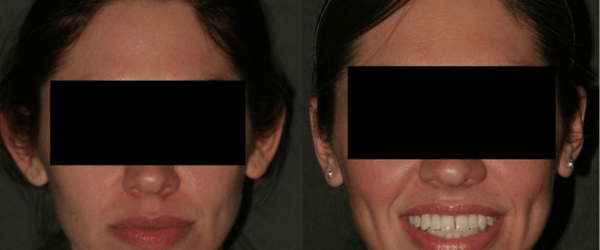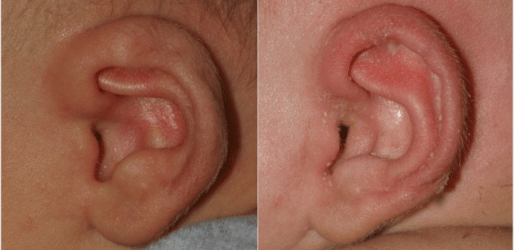Book Appointment Now
Otoplasty & Ear Lift Surgery in Latin America | Top Plastic Surgeons in Colombia, Costa Rica & Panama
Board-certified plastic surgeons, modern medical facilities, & all-inclusive packages at 50-70% less than US prices
Otoplasty in Latin America offers world-class ear surgery at a fraction of North American costs, performed by board-certified plastic surgeons in state-of-the-art medical facilities. Whether you’re seeking ear pinning surgery for prominent ears, earlobe repair from heavy earrings, or correction of pixie ear deformity, our comprehensive otoplasty packages in Colombia, Costa Rica, and Panama deliver exceptional results with personalized care. Latin America has become a premier destination for aesthetic plastic surgery, with surgeons trained by international medical boards and societies of plastic surgery. Our all-inclusive ear lift packages include initial consultation, surgical procedure, postoperative care, recovery houses, and bilingual patient coordinators — ensuring a smooth experience from arrival to full recovery. Save 50-70% compared to US costs while receiving the same quality care in accredited surgical facilities.
Our partner clinics feature experienced board-certified plastic surgeons specializing in facial aesthetic procedures, English-speaking medical staff, and modern surgical facilities meeting international standards. Recovery options include popular destinations like Cartagena, Medellín, San José, and Panama City, combining world-class medical care with a comfortable recovery experience. Explore affordable otoplasty packages and enjoy high-quality ear surgery abroad with clear communication, professional service, and results that boost your confidence.
Save money while receiving board-certified plastic surgery care in Latin America.
Otoplasty, or ear surgery, corrects prominent or misshapen ears, bringing them closer to the head or reshaping the ear for a more natural look. This procedure is often performed on children and adults by board-certified plastic surgeons to boost confidence and appearance. This may require general or local anesthesia depending on the patient’s age and surgical complexity.
Why Choose Otoplasty Surgery in Latin America?
You may be a suitable candidate for otoplasty if:

What Happens During the Procedure?
Your ear surgery takes place in our accredited surgical center, and we’ll use either local or general anesthesia depending on what’s best for you. During the 2-3 hour procedure, your board-certified plastic surgeon will:


Types of Ear Surgery & Treatments Available
Our board-certified plastic surgeons offer comprehensive ear surgery options tailored to your specific needs:
Board-Certified Plastic Surgeons & Medical Facilities
Colombia, Panama, and Costa Rica offer world-class medical facilities with board-certified plastic surgeons specializing in otoplasty and facial aesthetic procedures.
Each destination provides internationally accredited surgical centers, English-speaking medical staff, and comprehensive patient care. These countries maintain high medical standards with significant cost advantages compared to treatments in the US or Europe.
Cost of Ear Lift Surgery in Colombia, Costa Rica & Panama
Compare the prices and see how much you can save with our all-inclusive packages
| Location | Otoplasty Cost (USD) | Board-Certified Surgeons | Recovery Houses | English Support | Package Includes |
|---|---|---|---|---|---|
| Colombia (Medellín, Bucaramanga) | $1,500-$2,200 | Yes | Yes | Yes | Surgery, 5-night stay, transfers |
| Costa Rica | $1,800-$2,500 | Yes | Yes | Yes | Surgery, recovery care, coordinator |
| Panama | $1,700-$2,400 | Yes | Yes | Yes | All-inclusive package |
| United States | $5,000-$8,000 | Yes | No | Yes | Surgery only |
| Brazil | $2,000-$3,000 | Yes | Limited | Limited | Varies by clinic |
Client Reviews

What’s Included in Our Ear Surgery Packages
- Before you arrive:
- Initial online meeting with the in-country advocate who will manage your case and our consulting doctor.
- Referral to a board-certified plastic surgeon followed by an initial online consultation.
- Pre-travel meeting with your in-country advocate to finalize your itinerary.
- Day 1 – Arrival day:
- Arrive in Colombia, Costa Rica, or Panama.
- Welcome at the airport by your bilingual advocate.
- Transport to your recovery house or hotel.
- Welcome briefing by your advocate at the accommodation.
- Day 2 – Preparation day:
- Meet your advocate at the hotel in the morning.
- Transport to your pre-procedural consultation with your plastic surgeon.
- Detailed discussion with your advocate to ensure thorough preparation for the surgery.
- Day 3 & 4 – Procedure and Initial Recovery:
- Advocate meets you at the hotel in the morning.
- Transport to the accredited surgical facility for your otoplasty procedure.
- Post-procedure, stay overnight in the clinic if required.
- Next day, your advocate will pick you up from the clinic and transport you back to the recovery house for further recovery.
- Day 5 – Recovery day:
- Dedicated recovery day to ensure you are travel-ready and the procedure was successful.
- Option to engage in light activities if you feel well enough.
- Transport available.
- Advocate available throughout the day for any questions or needs.
- Day 6 – Travel day:
- Advocate meets you at the hotel.
- Transport to the airport.
- Advocate assistance until customs.
Otoplasty Recovery & Postoperative Care
Before Surgery:
- You will have a consultation with your board-certified plastic surgeon to discuss your goals, medical history, and any concerns.
- Pre-surgery instructions may include avoiding certain medications, stopping smoking, and arranging for someone to accompany you after the procedure if general anesthesia is used.
During Surgery:
- The surgery may be performed under local or general anesthesia in an accredited surgical facility.
- The surgeon will make incisions behind the ears to remove or reshape cartilage and bring the ears closer to the head.
- The incisions will be closed with sutures, and bandages will be applied to support the ears as they heal.
After Surgery:
- You may experience some swelling, bruising, and discomfort, which should gradually improve over the first few weeks.
- Follow your surgeon’s instructions on how to care for your ears and manage any discomfort.
- Use prescribed medications and avoid strenuous activities to aid in the healing process.
- Full recovery can take several weeks, with results becoming apparent as the swelling subsides.
Recovery After Your Surgery
Here’s what you can expect while healing:
First Week
You’ll go home the same day as surgery (or after one night, depending on your case). Your ears will be wrapped in bandages to keep them in their new position. There’s usually some soreness – nothing major, but we’ll give you pain medication just in case. The key is keeping those bandages dry and in place. Most people take it easy at home, sleeping with their head elevated to help with swelling.
Weeks 2-3
Time for the bandages to come off! You’ll switch to a lighter headband that you’ll wear at night. Most people head back to work now, and any swelling or bruising is fading nicely. Your ears might feel a bit stiff or tender – totally normal at this stage. Just be gentle when washing your hair or using the phone.
Month 1
Getting back to normal! The headband’s only needed at night now, and you can start exercising again (just be careful with contact sports). Your ears might still feel a bit different when you touch them, but they’re looking natural to everyone else. Most people say they’ve already forgotten about the surgery by now.
Long-term Results
The changes are permanent, and once you’re fully healed, you won’t have to think about your ears anymore. Kids especially love being able to wear any hairstyle they want, and adults often say they wish they’d done it sooner. The tiny scars behind your ears fade to practically nothing over time.
FAQs – Here we answer your common questions about Otoplasty
The results of otoplasty are typically permanent, providing long-lasting improvement in the shape and position of the ears.
Otoplasty can significantly enhance self-esteem and confidence by correcting prominent or misshapen ears, leading to a more balanced and natural appearance.
All our partner surgeons are board-certified by their national plastic surgery societies (like Sociedad Colombiana de Cirugía Plástica, Estética y Reconstructiva) and many hold international certifications. We provide full credentials during your virtual consultation.
Our medical facilities follow international patient safety standards with accredited surgical centers, sterile operating rooms, and comprehensive safety protocols. All procedures include proper anesthesia monitoring and emergency preparedness.
Otoplasty is usually an outpatient procedure, meaning you can go home the same day. However, some cases may require an overnight stay for monitoring.
Otoplasty packages range from $1,500-$3,000 including surgery, medical facilities, recovery care, and coordination — compared to $5,000-$8,000 in the US for surgery alone.
Initial recovery takes 5-7 days in-country with swelling subsiding over 2-3 weeks. We coordinate recovery houses near your surgical facility for optimal postoperative care before travel home.
Most people can return to work or school within 1-2 weeks, depending on the nature of their job and their personal recovery progress.
Yes, many patients combine ear surgery with other facial procedures. Our surgeons can create a comprehensive surgical plan during your initial consultation for procedures like facelifts, brow lifts, or breast augmentation.
Most patients experience mild to moderate discomfort rather than pain. Pain medication is prescribed to manage any discomfort during the initial recovery period.
Otoplasty is generally safe when performed by a qualified and experienced board-certified plastic surgeon. As with any surgery, there are risks and potential complications, which should be discussed with your surgeon.
Many patients find otoplasty worth it due to the significant improvement in their appearance and self-esteem. The decision is personal and should be made after thorough consideration and consultation with a qualified surgeon.
Otoplasty involves incisions, but they are usually placed in inconspicuous locations, such as behind the ears, and tend to fade over time with proper care.
The information provided here within should not be construed in any way as medical guidance or advice. Please consult with your medical physical or health provider. Information provided is for informative purposes only and may not capture all pertinent laws, standards, and best practices. The medical field is continually evolving; information mentioned may be outdated and/or could undergo changes. The interpretations presented are not official. Some sections are based on the interpretations or views of relevant authorities, but we cannot ensure that these perspectives will be supported in all professional settings.











